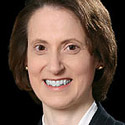01:44 PM
Ohio Mutual Takes a Bite Out of Policy Admin Transformation
It was a familiar story: Disparate, outdated policy administration systems, accumulated during business acquisitions, were holding back Ohio Mutual Insurance Group (OMIG). “Our aging mainframe-based systems were limping along and only permitted writing business in one state,” recalls Todd Albert, VP of IT. “The situation was inadequate for our existing business and was restricting growth.”
The Bucyrus, Ohio-based P&C insurer decided in 2003 to consolidate onto a single, modern platform. “For us, it was a business project, not an IT project,” says Albert. In practice, this meant business units would dedicate significant resources to the decision-making and implementation teams.
After narrowing the vendor options to two, OMIG ($264 million in total assets) selected CSC’s (Falls Church, Va.) POINT IN platform. “In addition to meeting our requirements, CSC was using the same platform for its own BPO services,” Albert notes. “It gave us confidence that CSC entrusted the platform with $4 billion in premiums.”
The rip-and-replace also required an infrastructure refresh. “We moved to IBM [Armonk, N.Y.] iSeries midrange computers and a mixed distributed environment,” explains Albert. “We also began investing about 3 percent of our annual IT budget into training to ensure our staff developed relevant skills.”
Near the end of the 18-month CSC deployment marathon, OMIG learned that the process would soon start all over again. “By the time we had migrated all of the legacy systems, it was September 2005 and we needed to adopt the next POINT IN version,” Albert says. “The six-month deployment required the same process of taking business users away from their jobs to focus on upgrading IT systems. By the time it was over in late 2006, we really wanted another way.”
As a member of CSC’s end user council, OMIG proposed an incremental updating strategy to the group and quickly found other allies. “We suggested vanilla upgrades could keep systems current while allowing users to decide which new features to turn on and when to do it,” says Albert. “In this way, we could make upgrades bite-size, which wouldn’t affect so many people, systems and processes.”
After CSC introduced POINT IN C.0 in 2008, with what the vendor calls a Continuous Delivery System of small, incremental upgrade releases, OMIG implemented the solution over another six-month period in 2009. “It’s likely the last big policy administration migration we’ll need to do for the rest of my working career,” jokes Albert.
Put Away the Forklift
Since going live with the solution, OMIG has adopted approximately 20 incremental upgrades, Albert reports. “Now new releases only require the part-time attention of a few people and roll out in 30 to 45 days on average,” he relates. “The painful forklift process, where you lose traction on everything else, is gone. This has provided a lot of relief for business and technical staff alike.”
While adopting CSC’s platform has reduced the inefficiencies and risks of running multiple legacy systems, according to Albert, version C.0 still relies on the aging COBOL programming language. Fortunately, he suggests, C.0 users can migrate to the new Java-coded version — incrementally.
“As COBOL programmers retire, it’ll be harder for us to find people with those skills,” acknowledges Albert. “In addition, the Java version of POINT IN will eliminate our batch cycle, making it real-time. So we’re beginning to develop Java skills internally and plan to look at moving to the new version in 2011.”
Meanwhile, the benefits already are accumulating. “Rather than writing business in only one state, today we’re in four states,” reports Albert. “Since we began the systems consolidation effort in 2003, our direct written premiums are up nearly 21 percent while our overall productivity has grown by almost 27 percent. And in IT, our head count is actually the same as it was when we started.”
Anne Rawland Gabriel is a technology writer and marketing communications consultant based in the Minneapolis/St. Paul metro area. Among other projects, she's a regular contributor to UBM Tech's Bank Systems & Technology, Insurance & Technology and Wall Street & Technology ... View Full Bio






















